
 Copyright © Michael Richmond.
This work is licensed under a Creative Commons License.
Copyright © Michael Richmond.
This work is licensed under a Creative Commons License.
Our Milky Way seems to be a peculiar combination of two different shapes: a roughly spherical bulge and halo, plus an extremely flat disk. How did it get this way?
It turns out that the two different systems -- round and flat -- formed at two different times. Let's see how that leads to their current shapes...
The early universe was full of pure hydrogen and helium gas. Some of this gas clumped together due to gravity to form very large clouds. Let's look at one cloud in particular...

Within this cloud, smaller clumps formed around small local enhancements in the density.
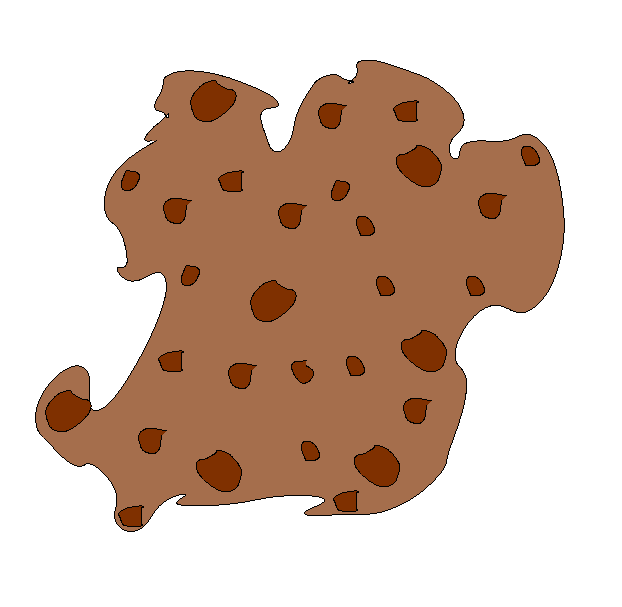
Within a billion years or so after the Big Bang, many of these initial clumps had turned into stars:
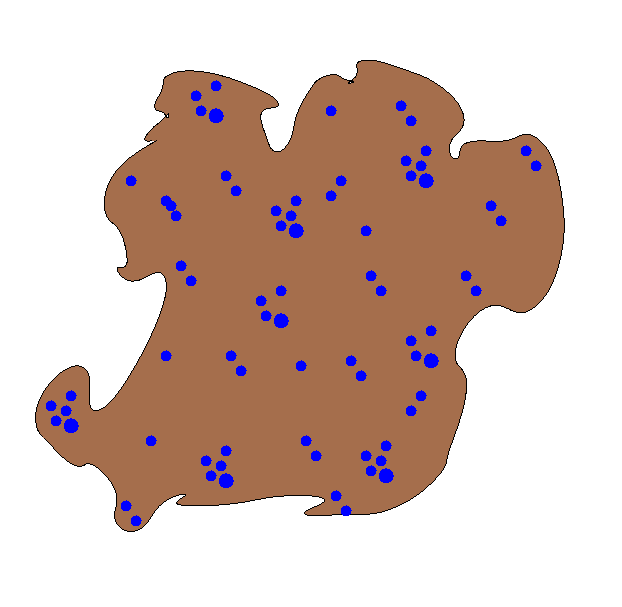
Now, in this particular cloud, nearly the entire allotment of gas turned into this initial generation of stars, leaving no gaseous material behind:
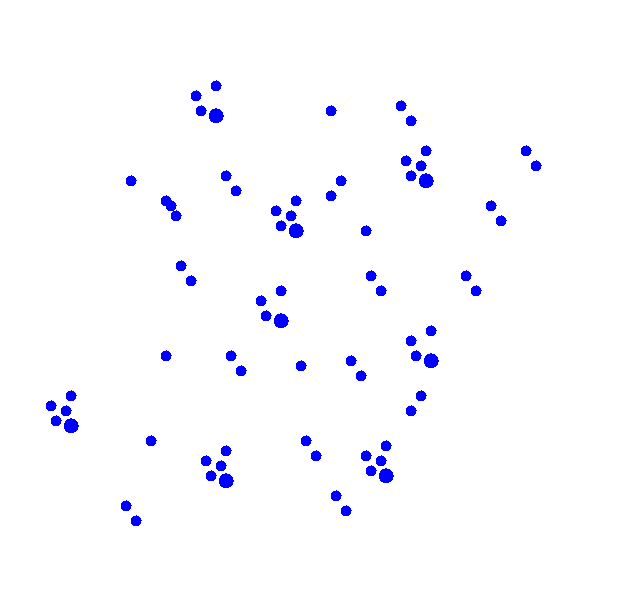
The stars all had some random initial velocity, going every which way:
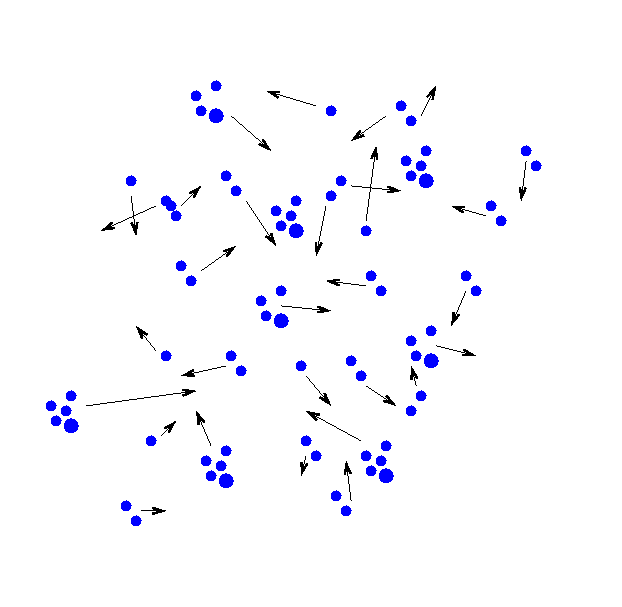
The gravitational force on each star combined with its random initial velocity to give it a unique orbit; most of the orbits dive deep into the galaxy and back out again. The result is a roughly spherical galaxy of stars moving in random directions, with very little gas or dust.

We see many galaxies just like this in the universe: we call them elliptical galaxies. NGC 205, one of the satellites of the Andromeda Galaxy, is a good example.
Our own Milky Way's bulge, halo, and globular clusters are full of very old stars which formed in this manner.
Let's now consider a different cloud of gas in the very early universe. The material in this cloud twists and turns in all directions, but, on average, rotates slightly in a counterclockwise direction:
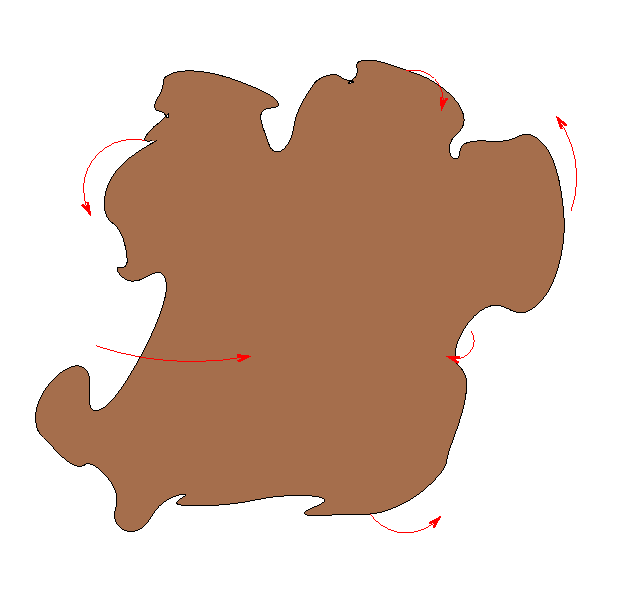
As time goes by -- perhaps several hundred million years, perhaps several billion years -- the cloud gradually flattens along the axis of net rotation:
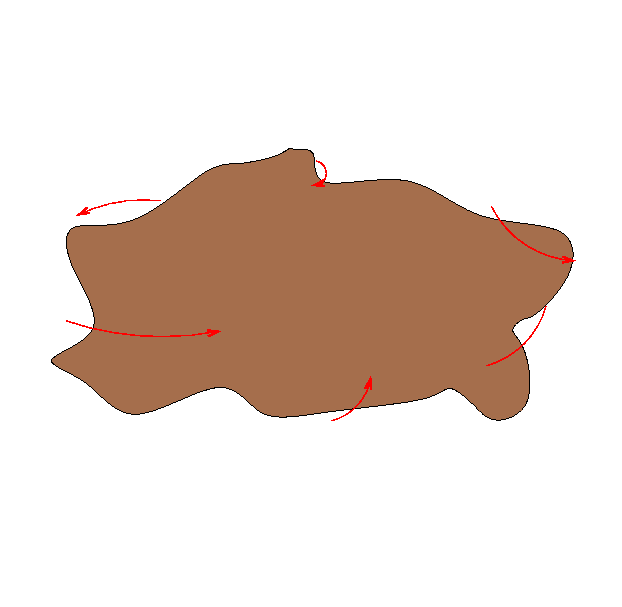
And flattens some more ...
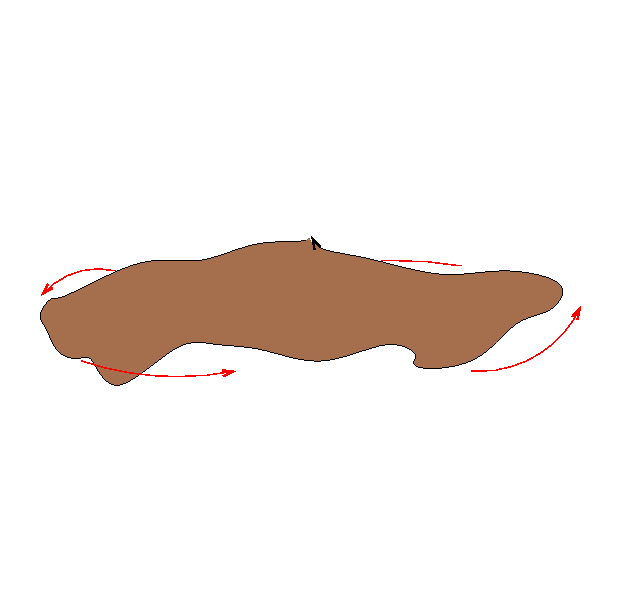
So that it ends up as a flat, round disk rotating in the same counterclockwise direction:
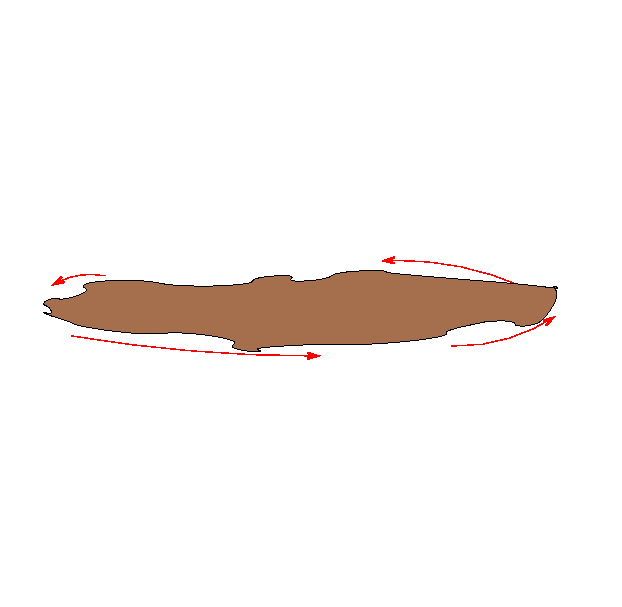
Why does the gas settle into a disk? I'll address that question in a moment, but let's first watch this cloud finish its evolution.
Some of the material in the disk now begins to clump around peaks in the local density:
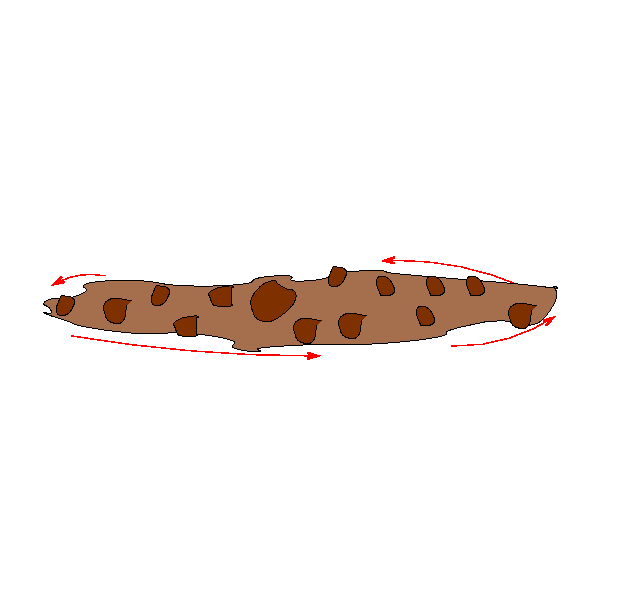
These clumps collapse to form stars ...
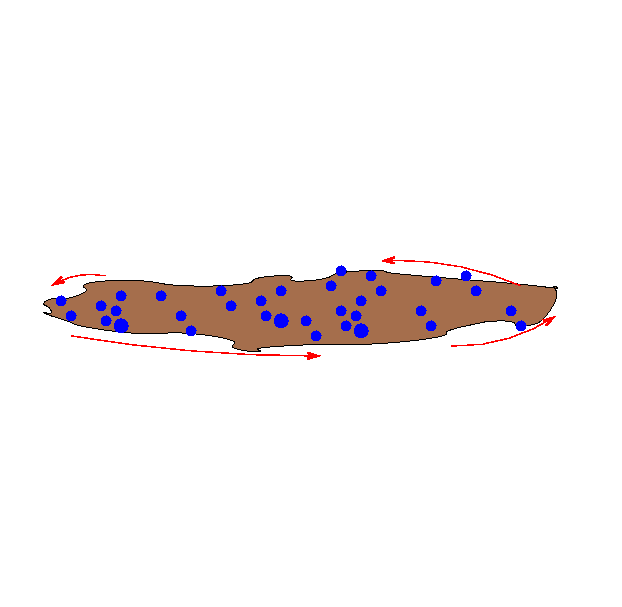
The result is a flattened disk with gas, dust and stars all mixed together, and all rotating in roughly circular orbits around the center. We see many galaxies like this in the universe: we call them spiral galaxies:
Our Milky Way Galaxy appears to be a mix of these two types. Like the Andromeda Galaxy, it has both a disk and a bulge plus halo:

That tells us that a significant fraction of the gigantic proto-Milky-Way cloud must have turned into stars very early ... but also that another significant fraction must have remained gaseous long enough to flatten into a disk. In fact, quite a bit of our galaxy is still in gaseous form, as this infrared image from the MSX satellite shows:
But why does a cloud of gas flatten into a disk? And why doesn't a cloud of stars do the same?
When two objects collide, they may bounce off each other elastically, meaning that they retain all their kinetic energy and speed:
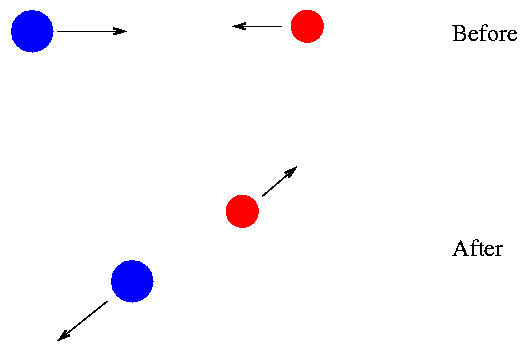
Or, if they deform, break, or radiate energy, we call it an inelastic collision: some of their kinetic energy is lost.
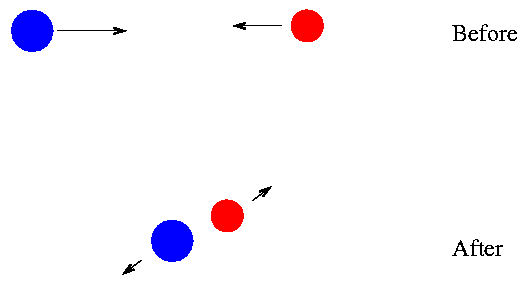
In a completely inelastic collision, the two objects stick together afterwards:

Now, what does this have to do with flattening? Think back to a cloud of material with a small overall rotation:

Objects which collide with each other may lose some of their kinetic energy. Which objects are most likely to collide, and which are least likely to collide?
Perhaps it will help to think of it this way: if you drive south in the northbound lane, you will probably collide with another car more quickly than if you drive north in the northbound lane.
If objects collide, they may lose some of their kinetic energy ... which means that they will slow down. In this particular cloud, which has a small net rotation counterclockwise,
After "a considerable time", the only motions left are those which occur in a counterclockwise direction with little vertical component:

But how long does this take? What is "a considerable time"?
The answer depends on the time between collisions. We have to wait long enough for each object to collide with other objects at least, oh, 10 or 20 times. So it all boils down to this:
Q: How long does it take stars to collide with each other? Q: How long does it take gas atoms to collide with each other?
The fact that galaxies made of stars tend to be spherical, while those with lots of gas tend to be flattened, leads one to suspect that atoms in a gas cloud probably collide more frequently than stars; that would explain why clouds of gas collapse into disks, while clouds of stars remain spherical. But let's check work it out.
Atoms in gas cloud Stars
----------------------------------------------------
10^(-10) m radius 10^9 m
0.01 m separation 10^(16) m
100 m/s speed 30 km/s
----------------------------------------------------
I have here in class two lacrosse balls, each of which has a radius of about 3 cm. Use these two balls as scale models of atoms, and then stars.
If lacrosse balls are hydrogen atoms ....
How far apart should I put them?
How long does it take each one to move its own diameter?
How long does it take each one to cross the distance to its neighbor?
If lacrosse balls are two stars in the galaxy ...
How far apart should I put them?
How long does it take each one to move its own diameter?
How long does it take each one to cross the distance to its neighbor?
 Copyright © Michael Richmond.
This work is licensed under a Creative Commons License.
Copyright © Michael Richmond.
This work is licensed under a Creative Commons License.